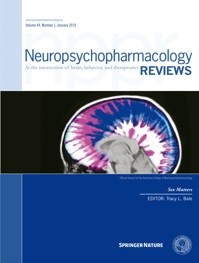 “Heroin (diamorphine) is a highly addictive opioid drug synthesized from morphine. The use of heroin and incidence of heroin associated overdose death has increased sharply in the US.
“Heroin (diamorphine) is a highly addictive opioid drug synthesized from morphine. The use of heroin and incidence of heroin associated overdose death has increased sharply in the US.
Heroin is primarily metabolized via deacetylation (hydrolysis) forming the active metabolites 6-monoacetylmorphine (6-MAM) and morphine. A diminution in heroin hydrolysis is likely to cause higher drug effects and toxicities.
In this study, we sought to determine the contribution of the major hepatic hydrolase carboxylesterase 1 (CES1) to heroin metabolism in the liver as well as the potential influence of one of its known genetic variants, G143E (rs71647871).
Furthermore, given the potential therapeutic application of cannabidiol (CBD) for heroin addiction and the frequent co-abuse of cannabis and heroin, we also assessed the effects of CBD on heroin metabolism.
CBD exhibited potent in vitro inhibition toward both heroin and 6-MAM hydrolysis, which may be of potential clinical relevance.”
https://www.ncbi.nlm.nih.gov/pubmed/31837295
“Cannabidiol is a potent in vitro inhibitor of the two-step hydrolysis of heroin.”
https://www.sciencedirect.com/science/article/abs/pii/S0009279719317259?via%3Dihub

 “Bone metabolism is strictly regulated, and impaired regulation caused by hormonal imbalances induces systemic bone loss. Local bone loss caused by tumor invasion into bone is suggested to be induced by the generation of cytokines, which affect bone metabolism, by tumor cells.
“Bone metabolism is strictly regulated, and impaired regulation caused by hormonal imbalances induces systemic bone loss. Local bone loss caused by tumor invasion into bone is suggested to be induced by the generation of cytokines, which affect bone metabolism, by tumor cells. “The most bioactive ingredient of
“The most bioactive ingredient of  “Elucidation of
“Elucidation of 
 “The endocannabinoid system (ECS), modulated by metabolites of linoleic acid (LA), is important in regulating cardiovascular function.
“The endocannabinoid system (ECS), modulated by metabolites of linoleic acid (LA), is important in regulating cardiovascular function. “Chronic pain affects a significant percentage of the United States population, and available pain medications like opioids have drawbacks that make long-term use untenable.
“Chronic pain affects a significant percentage of the United States population, and available pain medications like opioids have drawbacks that make long-term use untenable. “Despite improvements in medical care, patients with advanced cancer still experience substantial symptom distress. There is increasing interest in the use of medicinal
“Despite improvements in medical care, patients with advanced cancer still experience substantial symptom distress. There is increasing interest in the use of medicinal  “Cannabidiol (CBD) has emerged as a potential agent for breast cancer management.
“Cannabidiol (CBD) has emerged as a potential agent for breast cancer management.